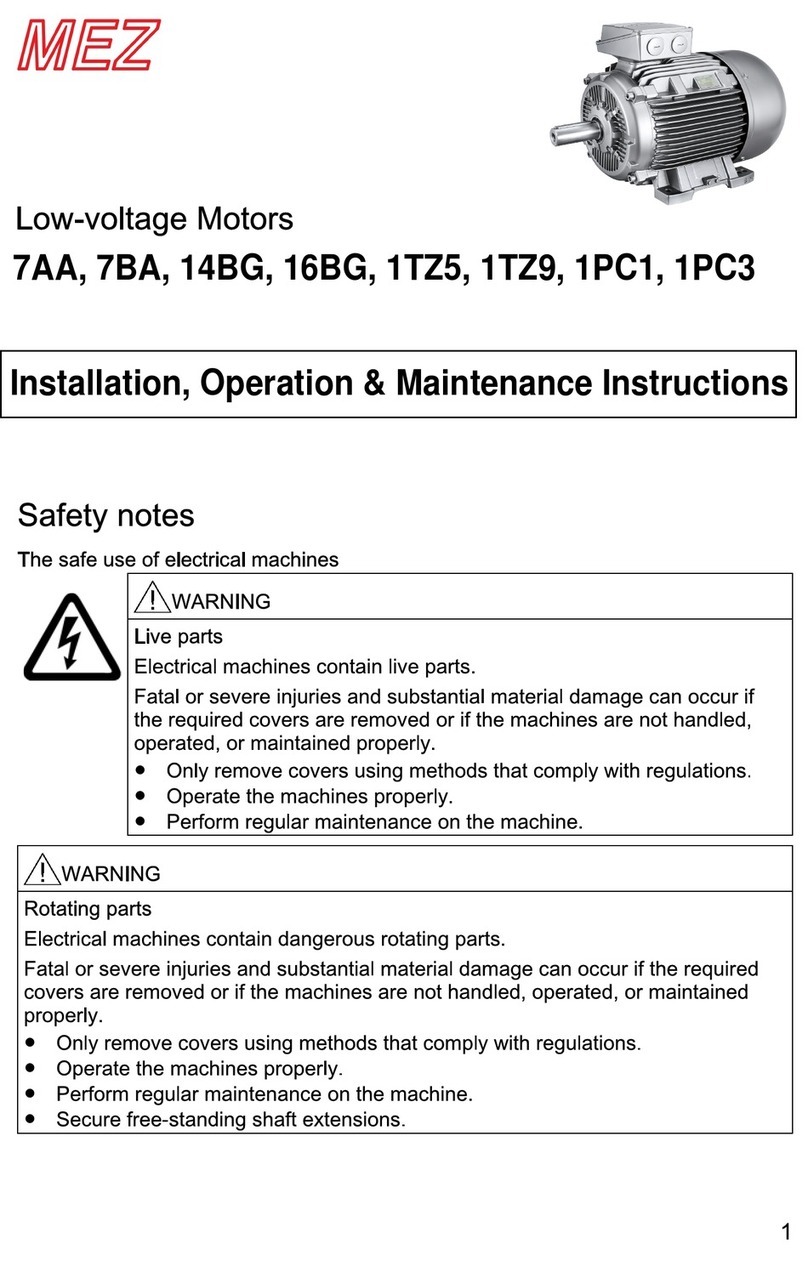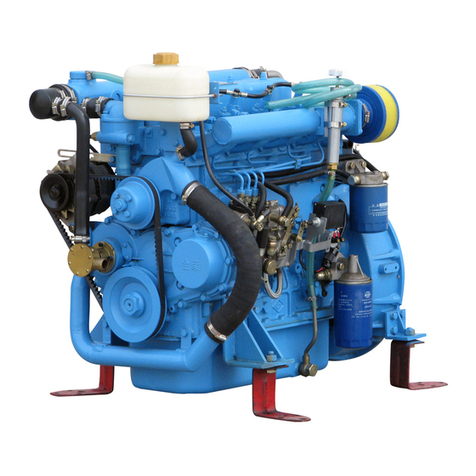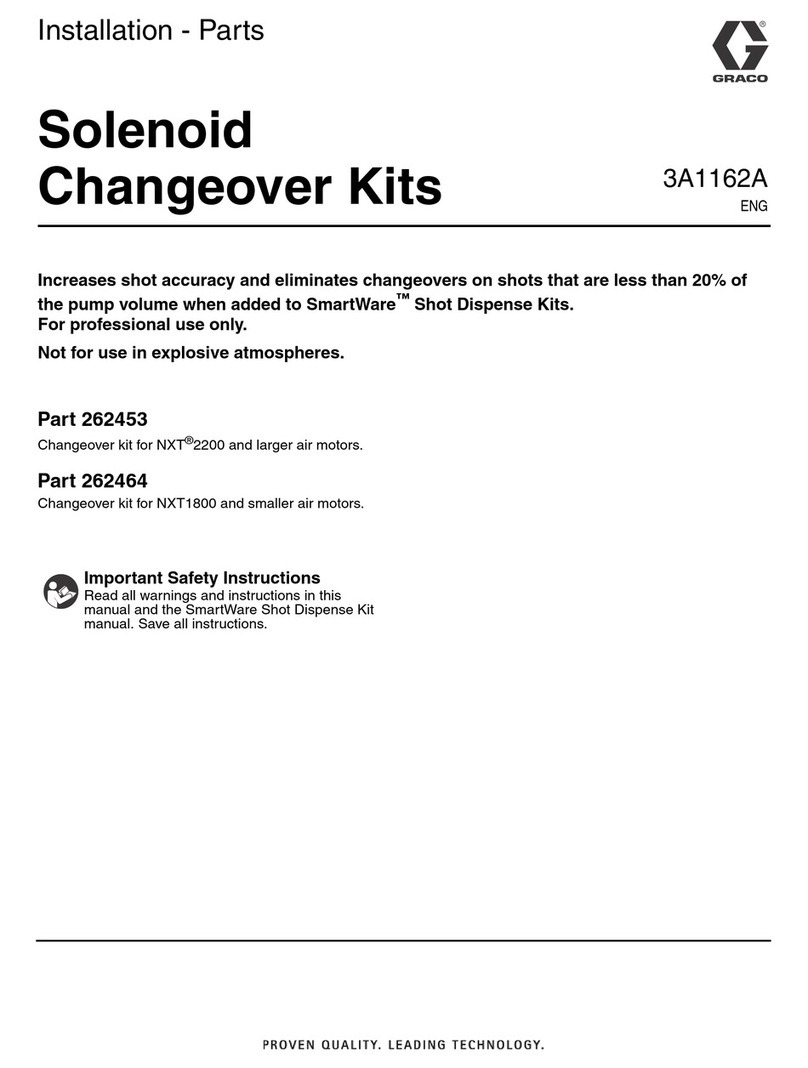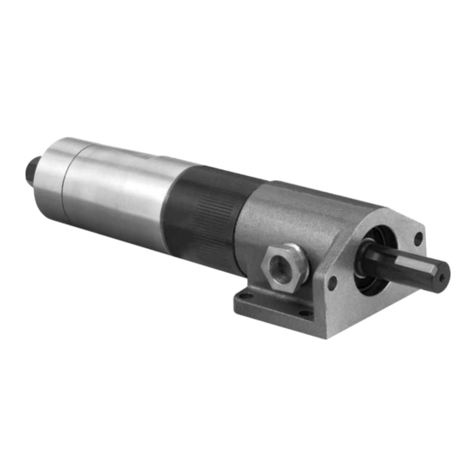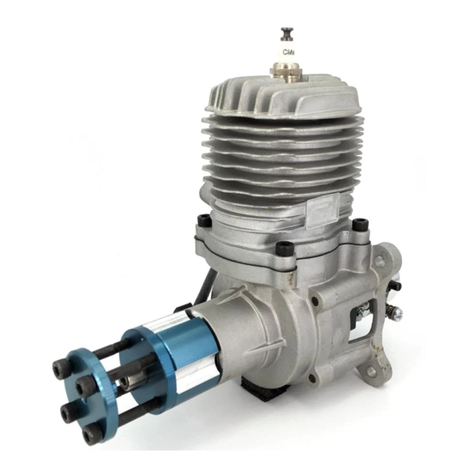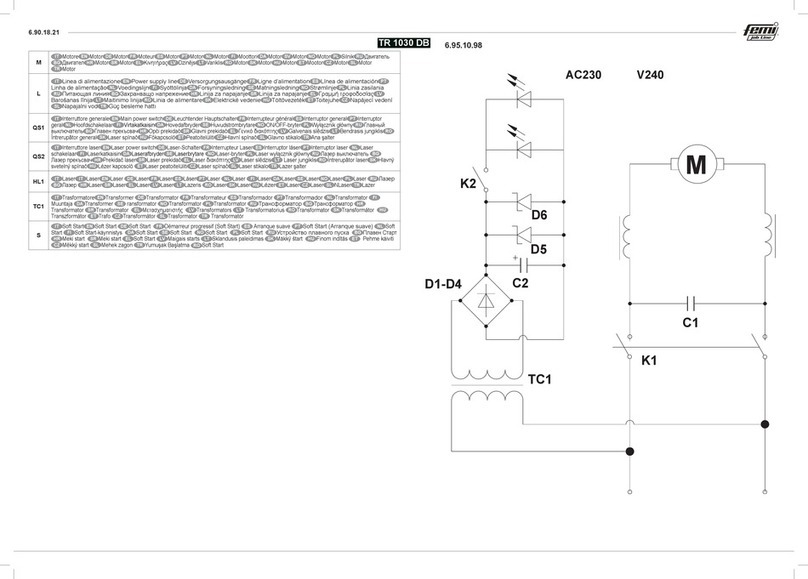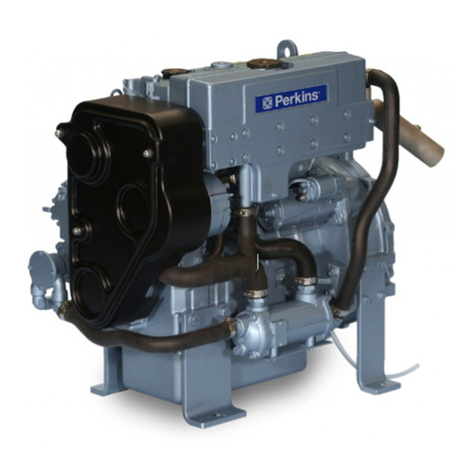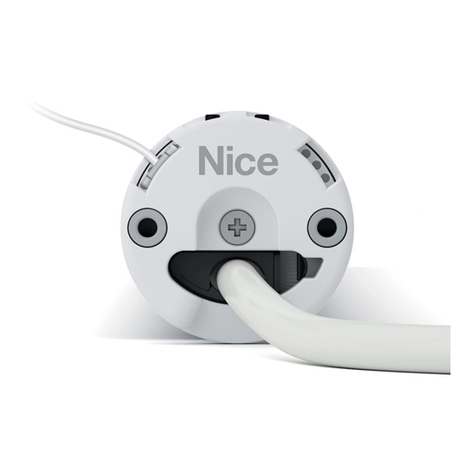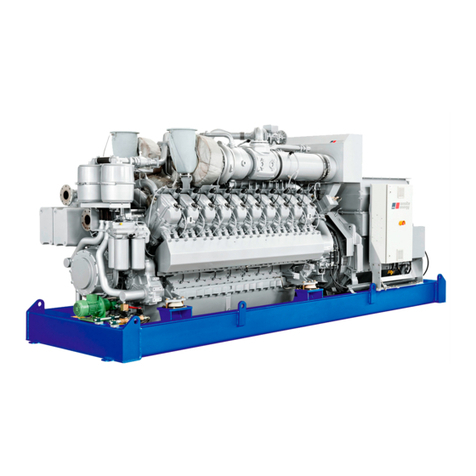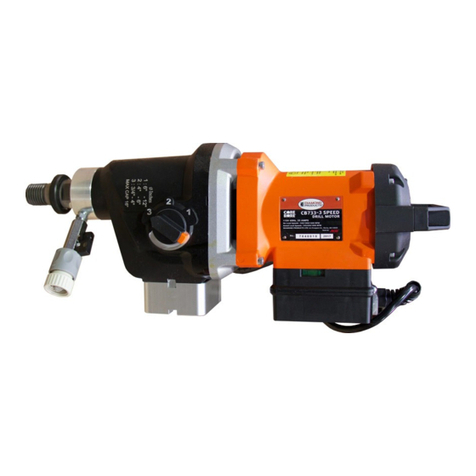MEZ Zone 21 Guide

Installation, Operation & Maintenance Instructions
Zone 2
Zone 22
Zone 2 & 22
Hazardous Area Electric Motors
Zone 21


Low-voltage motors
Operating Instructions
For applications in Zone 2
(IEC/EN/GOST 60079-10-1, GB 3836.14)
For applications in Zone 21 and Zone 22
(IEC/EN/GOST 60079-10-2, GB 12476.3)
September 2021
Introduction
1
Safety information
2
Description
3
Preparing for use
4
Assembly
5
Electrical connection
6
Commissioning
7
Operation
8
Maintenance
9
Spare parts
10
Disposal
11
A
Technical data
Frame size 71-315

Legal information
Warning notice system
This manual contains notices you have to observe in order to ensure your personal safety, as well as to prevent
damage to property. The notices referring to your personal safety are highlighted in the manual by a safety alert
symbol, notices referring only to property damage have no safety alert symbol. These notices shown below are
graded according to the degree of danger.
DANGER
indicates that death or severe personal injury will result if proper precautions are not taken.
WARNING
indicates that death or severe personal injury may result if proper precautions are not taken.
CAUTION
indicates that minor personal injury can result if proper precautions are not taken.
NOTICE
indicates that property damage can result if proper precautions are not taken.
If more than one degree of danger is present, the warning notice representing the highest degree of danger will
be used. A notice warning of injury to persons with a safety alert symbol may also include a warning relating to
property damage.
Qualified Personnel
The product/system described in this documentation may be operated only by personnel qualified for the specific
task in accordance with the relevant documentation, in particular its warning notices and safety instructions.
Qualified personnel are those who, based on their training and experience, are capable of identifying risks and
avoiding potential hazards when working with these products/systems.
Proper use of MEZ products
Note the following:
WARNING
MEZ products may only be used for the applications described in the catalog and in the relevant technical
documentation. If products and components from other manufacturers are used, these must be recommended
or approved by MEZ. Proper transport, storage, installation, assembly, commissioning, operation and
maintenance are required to ensure that the products operate safely and without any problems. The permissible
ambient conditions must be complied with. The information in the relevant documentation must be observed.
Disclaimer of Liability
We have reviewed the contents of this publication to ensure consistency with the hardware and software
described. Since variance cannot be precluded entirely, we cannot guarantee full consistency. However, the
information in this publication is reviewed regularly and any necessary corrections are included in subsequent
editions.
MEZ Electric Motors

3
Table of contents
1 Introduction...................................................................................................................................9
1.1 About these instructions ...................................................................................................... 9
1.2 Compiling personal documents............................................................................................ 9
2 Safety information ....................................................................................................................... 11
2.1 Information for those responsible for the plant or system ................................................... 11
2.2 The 5 safety rules.............................................................................................................. 11
2.3 Qualified personnel ........................................................................................................... 12
2.4 Safe handling .................................................................................................................... 12
2.5 Electromagnetic fields when operating electrical power engineering installations ............... 14
2.6 Use in hazardous areas..................................................................................................... 14
2.7 Electrostatic sensitive devices ........................................................................................... 15
2.8 Electromagnetic compatibility ............................................................................................ 16
2.9 Interference immunity........................................................................................................ 16
2.10 Influence on the line power supply through a strongly irregular torque................................ 17
2.11 Interference voltages when operating the converter........................................................... 17
2.12 Special designs and construction versions......................................................................... 17
2.13 Special conditions for use.................................................................................................. 17
3 Description ................................................................................................................................. 19
3.1 Area of application............................................................................................................. 19
3.2 Rating plates ..................................................................................................................... 21
3.3 Installation......................................................................................................................... 22
3.3.1 Regulations ....................................................................................................................... 23
3.3.2 Cooling and ventilation ...................................................................................................... 24
3.3.2.1 Machines with a fan........................................................................................................... 24
3.3.2.2 Machines without a fan (optional) ...................................................................................... 24
3.3.3 Bearings............................................................................................................................ 25
3.3.4 Axial and radial forces ....................................................................................................... 25
3.3.5 Balancing .......................................................................................................................... 25
3.3.6 Types of construction/method of installation....................................................................... 26
3.3.7 Degree of protection.......................................................................................................... 27
3.3.7.1 Degree of protection for explosion-proof machines ............................................................ 27
3.3.8 Environmental conditions................................................................................................... 28
3.3.9 Optional built-on and built-in accessories........................................................................... 28
3.3.10 Marking ............................................................................................................................. 29
3.3.11 Terminal box ..................................................................................................................... 30
3.3.12 Paint finish ........................................................................................................................ 30

Table of contents
4
4 Preparing for use ........................................................................................................................ 33
4.1 Safety-related aspects to consider when configuring the plant ............................................33
4.2 Observing the operating mode............................................................................................33
4.3 Machines without final paint coating ...................................................................................33
4.4 Delivery..............................................................................................................................34
4.5 Transport and storage ........................................................................................................34
4.5.1 Storage ..............................................................................................................................36
4.5.2 Securing the rotor...............................................................................................................39
4.5.3 Commissioning after storage ..............................................................................................41
4.5.3.1 Insulation resistance and polarization index........................................................................41
4.5.3.2 Lubricating the rolling bearings ...........................................................................................41
4.5.3.3 Regreasing rolling bearings after storage periods of up to two years...................................41
4.5.3.4 Releasing the rotor shipping brace before commissioning...................................................41
4.6 Ensure adequate cooling....................................................................................................42
4.7 Thermal protection .............................................................................................................43
4.8 Interlock circuit for anti-condensation heating .....................................................................44
4.9 Noise emission...................................................................................................................45
4.10 Voltage and frequency fluctuations during line operation.....................................................45
4.11 Rotational speed limit values ..............................................................................................46
4.12 System-inherent frequencies ..............................................................................................46
4.13 Electromagnetic compatibility .............................................................................................46
4.14 Converter operation............................................................................................................47
4.14.1 Parameterizing the converter..............................................................................................47
4.14.2 Converter input voltage ......................................................................................................48
4.14.3 Reducing bearing currents for converter operation..............................................................48
4.14.4 Insulated bearings for converter operation..........................................................................50
4.14.5 Tandem operation ..............................................................................................................51
4.14.6 Speed limits for converter operation ...................................................................................51
5 Assembly................................................................................................................................... 53
5.1 Safety instructions for installation........................................................................................53
5.2 Preparing for installation.....................................................................................................54
5.2.1 Requirements for installation ..............................................................................................54
5.2.2 Insulation resistance...........................................................................................................55
5.2.2.1 Insulation resistance and polarization index........................................................................55
5.2.2.2 Checking the insulation resistance and polarization index of the winding ............................56
5.3 Mounting and installed the machine....................................................................................59
5.3.1 Preparing the assembly area..............................................................................................59
5.3.2 Lift the machine to where it will be mounted and position it .................................................59
5.3.3 Machines with type of construction IM B15, IM B9, IM V8 and IM V9 ..................................60
5.3.4 Foot mounting ....................................................................................................................60
5.4 Alignment and fastening .....................................................................................................61
5.4.1 Repainting/touching up the paint finish of explosion-protected machines.............................61
5.4.2 Measures for alignment and mounting................................................................................61

Table of contents
5
5.4.3 Flatness of the supporting surfaces for conventional motors .............................................. 62
5.4.4 Machine frame mounting feet (special design) ................................................................... 62
5.5 Installing the machine........................................................................................................ 63
5.5.1 Preconditions for smooth, vibration-free operation ............................................................. 63
5.5.2 Aligning the machine to the driven machine and mounting................................................. 63
5.5.2.1 Horizontal types of construction with mounting feet............................................................ 63
5.5.2.2 Horizontal types of construction with flange ....................................................................... 64
5.5.2.3 Vertical types of construction with flange ........................................................................... 64
5.5.3 Removing the rotor shipping brace .................................................................................... 65
5.5.4 Recommended alignment accuracy ................................................................................... 65
5.5.5 Mounting the drive output elements ................................................................................... 66
6 Electrical connection.................................................................................................................... 69
6.1 Connecting the machine.................................................................................................... 70
6.1.1 Terminal box ..................................................................................................................... 71
6.1.1.1 Circuit diagram inside the terminal box cover..................................................................... 72
6.1.1.2 Direction of rotation ........................................................................................................... 72
6.1.1.3 Terminal marking............................................................................................................... 73
6.1.1.4 Additional bores in the terminal box ................................................................................... 73
6.1.1.5 Cable entry........................................................................................................................ 73
6.1.1.6 Protruding connection cables............................................................................................. 74
6.1.1.7 Connecting protruding cables ............................................................................................ 74
6.1.1.8 Connection with/without cable lugs .................................................................................... 74
6.1.1.9 Thread sizes in the terminal box ........................................................................................ 75
6.1.1.10 Minimum air clearances..................................................................................................... 76
6.1.1.11 Internal equipotential bonding............................................................................................ 76
6.1.2 Cable glands ..................................................................................................................... 76
6.1.2.1 Mounting position of sheet metal nuts in screw-type connections....................................... 77
6.2 Tightening torques............................................................................................................. 78
6.2.1 Cable entries, sealing plugs and thread adapters............................................................... 78
6.3 Connecting the grounding conductor ................................................................................. 78
6.3.1 Minimum surface area of grounding conductor................................................................... 78
6.3.2 Grounding connection type................................................................................................ 79
6.4 Connecting a temperature sensor / anti-condensation heating ........................................... 80
6.4.1 Connecting optional integrated devices and equipment...................................................... 80
6.5 Conductor connection........................................................................................................ 81
6.5.1 Cable ends with wire end sleeves...................................................................................... 84
6.5.2 Connecting aluminum conductors...................................................................................... 84
6.6 Connecting the converter................................................................................................... 85
6.7 Final checks ...................................................................................................................... 87
7 Commissioning ........................................................................................................................... 89
7.1 Measures before commissioning ....................................................................................... 89
7.1.1 Insulation resistance and polarization index ....................................................................... 91
7.1.2 Testing the cooling of the machine .................................................................................... 91
7.1.3 Commissioning an external fan.......................................................................................... 92
7.1.4 Further documents ............................................................................................................ 93
7.2 Setpoint values for monitoring the bearing temperature ..................................................... 93

Table of contents
6
7.3 Switching on.......................................................................................................................93
7.3.1 Test run..............................................................................................................................95
8 Operation................................................................................................................................... 97
8.1 Safety instructions for operation .........................................................................................97
8.1.1 Safety instructions relating to ventilation and cooling ........................................................102
8.1.1.1 Forced ventilation (optional): Cooling method IC 416 in accordance with
EN / IEC 60034-6 .............................................................................................................102
8.1.2 Switching on with the anti-condensation heating active.....................................................102
8.2 Switching on the machine.................................................................................................103
8.3 Switching off the external fan............................................................................................103
8.4 Switching on again after an emergency switching-off ........................................................103
8.5 Stoppages........................................................................................................................104
8.5.1 Avoidance of damage to rolling bearings during stoppages...............................................105
8.5.2 Decommissioning the machine .........................................................................................105
8.5.3 Re-commissioning the machine........................................................................................105
8.6 faults ................................................................................................................................106
8.6.1 Inspections in the event of faults.......................................................................................106
8.6.2 Electrical faults.................................................................................................................106
8.6.3 Mechanical faults .............................................................................................................107
8.6.4 Rolling bearing faults........................................................................................................108
8.6.5 Faults at the external fan ..................................................................................................108
8.7 Deactivating .....................................................................................................................108
9 Maintenance .............................................................................................................................109
9.1 Customs union Eurasia (optional).....................................................................................109
9.2 Inspection and maintenance.............................................................................................110
9.2.1 Safety instructions for inspection and maintenance...........................................................110
9.2.2 Inspections in the event of faults.......................................................................................112
9.2.3 First inspection after installation or repair..........................................................................112
9.2.4 General inspection ...........................................................................................................113
9.2.5 Assessing the rolling bearings ..........................................................................................114
9.2.6 Mechanical explosion protection for rolling bearings .........................................................114
9.2.7 Maintenance intervals.......................................................................................................115
9.2.8 Re-greasing .....................................................................................................................116
9.2.9 Cleaning...........................................................................................................................116
9.2.10 Risk of explosion due to damaged seals...........................................................................117
9.2.11 Drain condensate .............................................................................................................117
9.2.12 Insulation resistance and polarization index......................................................................118
9.2.13 Maintaining the external fan (forced ventilation) ................................................................118
9.2.14 Repainting........................................................................................................................119
9.3 Corrective maintenance....................................................................................................120
9.3.1 Machines with a certificate extended with an "X"...............................................................121
9.3.2 Anti-condensation heating ................................................................................................122
9.3.3 Fundamentals ..................................................................................................................122
9.3.4 Rolling bearings ...............................................................................................................123
9.3.4.1 Replacing bearings in explosion-proof machines ..............................................................124
9.3.4.2 Fitting bearings.................................................................................................................124

Table of contents
7
9.3.4.3 Explosion hazard due to overheating of the rolling bearings............................................. 126
9.3.5 Mounting dimension "x" ................................................................................................... 127
9.3.6 Fan ................................................................................................................................. 127
9.3.6.1 Mounting fans.................................................................................................................. 128
9.3.7 Cable entries, sealing plugs and thread adapters............................................................. 128
9.3.8 Tightening torques........................................................................................................... 129
9.3.9 Screw lock washers......................................................................................................... 129
9.3.10 Links ............................................................................................................................... 129
9.3.11 Reassembly: Miscellaneous information .......................................................................... 129
9.3.12 Optional add-on units ...................................................................................................... 129
9.3.13 O-ring seal ...................................................................................................................... 130
10 Spare parts............................................................................................................................... 131
10.1 Parts order ...................................................................................................................... 131
10.2 Data matrix code on the machine .................................................................................... 131
10.3 Ordering data .................................................................................................................. 131
10.4 Purchasing commercially available spare parts................................................................ 132
10.5 Determining the spare parts ..................................................................... 132
10.6 Replacing rolling bearings ............................................................................................... 132
10.7 Anti-condensation heating ............................................................................................... 133
10.8 Parts groups definition..................................................................................................... 133
10.9 Ordering example............................................................................................................ 134
10.10 Machine parts.................................................................................................................. 135
10.10.1 Part lists .......................................................................................................................... 135
10.11 Standardized parts .......................................................................................................... 137
10.12 Exploded drawings .......................................................................................................... 138
1TE1 shaft hei ghts 71 ... 90 cast iron .............................................................................. 138
1TE1 shaft heights 100 ... 200 cast iron .......................................................................... 139
1TE1 shaft heights 225 ... 315 cast iron .......................................................................... 140
Terminal box 1TE1 shaft heights 71 ... 200 cast iron ....................................................... 141
Terminal box 1TE1 shaft heights 225 cast iron ..................................................... 142
Terminal box 1TE1 shaft heights 250 ... 280 cast iron ..................................................... 143
Terminal box 1TE1 shaft height 315 cast iron .................................................................. 144
11 Disposal ................................................................................................................................... 146
11.1 RoHS - restricting the use of certain hazardous substances............................................. 146
11.2 Information according to Article 33 of the REACH regulation............................................ 146
..........
................................

Table of contents
8
11.3 Preparing for disassembly ................................................................................................147
11.4 Dismantling the machine ..................................................................................................147
11.5 Disposal of components ...................................................................................................147
A Technical data ...........................................................................................................................150
A.1 Tightening torques............................................................................................................150
A.1.1 Tightening torques for screw and bolt connections............................................................151
A.1.2 Stud-type bushings...........................................................................................................152
A.1.3 Terminal boxes, end shields, grounding conductors, sheet metal fan covers.....................152
A.1.3.1 Terminal board and grounding..........................................................................................152
A.1.4 Additional connecting terminals for monitoring equipment and anti-condensation
heating.............................................................................................................................152

9
Introduction 1
1.1 About these instructions
These instructions describe the machine and explain how to handle it, from initial delivery to
final disposal of the equipment. Keep these instructions for later use.
Read these operating instructions before you handle the machine and follow the instructions
to become familiar with its design and operating principles and thus ensure safe, problem-
free machine operation and long service life.
Safety instructions and handling-related warning notes are provided in these instructions.
When carrying out any activity at or with the machine, carefully comply with all of these notes
for your own safety, to protect other people and to avoid material damage.
Please contact the Service Center (Page 159) if you have any suggestions on how to
improve this document.
Text format features
You can find the following text format features in these instructions:
1. Handling instructions are always formatted as a numbered list. Always perform the steps
in the order given.
●Lists are formatted as bulleted lists.
–Lists on the second level are hyphenated.
Note
The note provides you with additional information about the product itself, handling the
product - and the relevant documentation.

Introduction
1.2 Compiling personal documents
10
Using the "Documentation" function, you can efficiently compile your own plant or system
documentation. The "Documentation" compiled in a specific language can also be
automatically exported in one of the other available languages.
The full functionality is only available for registered users.

11
Safety information 2
2.1 Information for those responsible for the plant or system
This electric machine has been designed and built in accordance with the specifications
contained in Directive 2014/35/EU ("Low-Voltage Directive") and is intended for use in
industrial plants. Please observe the country-specific regulations when using the electric
machine outside the European Community. Follow the local and industry-specific safety and
setup regulations.
The persons responsible for the plant must ensure the following:
●Planning and configuration work and all work carried out on and with the machine is only
to be done by qualified personnel.
●The operating instructions must always be available for all work.
●The technical data as well as the specifications relating to the permissible installation,
connection, ambient and operating conditions are taken into account at all times.
●The specific setup and safety regulations as well as regulations on the use of personal
protective equipment are observed.
Note
Use the services and support provided by the local service center (Page 159) for
planning, installation, commissioning and service work.
This machine has been designed, built and tested in accordance with Directive 2014/34/EU
("Explosion Protection Directive") and is intended for use in industrial plants with a potentially
explosive atmosphere. Commissioning the machine in hazardous zones is absolutely
prohibited until conformance with these guidelines has been proven based on the
appropriate certificate.
Only commission the machine if it has been absolutely confirmed that the plant or system is
in full conformance with the valid directive.
Please observe the country-specific regulations when using the machine outside the
European Community.
2.2 The 5 safety rules
To ensure your own personal safety as well as to avoid material damage, always comply
with the safety-relevant instructions when carrying out any work. Also carefully comply with
the 5 safety rules according to EN 50110-1 "Working in a no-voltage state" in the specified
sequence.

Safety information
2.3 Qualified personnel
12
5 safety rules
1. Disconnect the system.
Also disconnect the auxiliary circuits, for example, anti-condensation heating.
2. Secure against reconnection.
3. Verify absence of operating voltage.
4. Ground and short-circuit.
5. Provide protection against adjacent live parts.
To energize the system, apply the measures in reverse order.
2.3 Qualified personnel
All work at the machine must be carried out by qualified personnel only. For the purpose of
this documentation, qualified personnel is taken to mean people who fulfill the following
requirements:
●Through appropriate training and experience, they are able to recognize and avoid risks
and potential dangers in their particular field of activity.
●They have been instructed to carry out work on the machine by the appropriate person
responsible.
2.4 Safe handling
Workplace safety depends on the attentiveness, care, and common sense of the personnel
who install, operate, and maintain the machine. In addition to the safety measures cited, as a
matter of principle, the use of caution is necessary when you are near the machine. Always
pay attention to your safety.
Also observe the following to prevent accidents:
●General safety regulations applicable in the country where the machine is deployed.
●Manufacturer-specific and application-specific regulations
●Special agreements made with the operator
●Separate safety instructions supplied with the machine
●Safety symbols and instructions on the machine and its packaging

Safety information
2.4 Safe handling
13
Danger as a result of stationary parts under voltage (live parts)
Live parts represent a hazard. Touch protection against active (live) parts is no longer
guaranteed if covers are removed. The minimum clearance and creepage distances may be
violated when coming close to live parts. Touching or coming close to them can result in
death, serious injury or material damage.
●Ensure that all live parts are suitably covered.
●Switch off and disconnect the machine first if you want to remove covers. Observe the "5
safety rules" (Page 11).
Risk of injury due to rotating parts
Rotating parts are dangerous. Touch protection against rotating parts is no longer
guaranteed if covers are removed. Touching rotating parts can result in death, serious injury
or material damage.
●Ensure that all rotating parts are reliably covered.
●Switch off and disconnect the machine first if you want to remove covers. Observe the "5
safety rules" (Page 11).
●Only remove covers when the rotating parts have come to a complete standstill.
Risk of burns due to hot surfaces
Individual machine parts can become hot in operation. Burns can result when coming into
contact with these parts.
●Never touch machine parts during operation.
●Allow the machine to cool before starting work on the machine.
●Check the temperature of parts before touching them. If required, wear suitable protective
equipment.
Health hazard due to chemical substances
Chemical substances required for the setup, operation and maintenance of machines can
present a health risk.
●Observe the product information provided by the manufacturer.
Flammable substances hazard
Chemical substances required for the setup, operation and maintenance of machines may
be flammable. These substances can ignite if handled incorrectly. They can cause burns and
property damage.
●Observe the product information provided by the manufacturer.
See also
Inspection and maintenance (Page 110)

Safety information
2.5 Electromagnetic fields when operating electrical power engineering installations
14
Noise emissions
During operation, the machine's noise emission levels can exceed those permitted at the
workplace, which can cause hearing damage.
●Ensure that nobody is in the area of increased noise emissions during machine operation.
●Take steps to reduce noise so that the machine can be operated safely within your
system. The following measures may help to reduce noise.
–Covers
–Noise insulation
–Hearing protection measures
Prevention of hearing damage
If the permissible sound pressure level is exceeded, hearing damage can occur when
operating three-phase motors at their rated power.
The permissible sound pressure level is 70 dB (A).
2.5 Electromagnetic fields when operating electrical power engineering
installations
Electrical power equipment generate electromagnetic fields during operation. Potentially
lethal malfunctions can occur in medical implants, e.g. pacemakers, in the vicinity of
electrical power equipment. Data may be lost on magnetic or electronic data carriers.
●Protect the personnel working in the plant by taking appropriate measures, such as
erecting identifying markings, safety barriers and warning signs and giving safety talks.
●Observe the nationally applicable health and safety regulations.
●It is forbidden for people with pacemakers to be close to the machine.
●Do not carry any magnetic or electronic data media.
2.6 Use in hazardous areas
Electrical systems in hazardous zones must be assembled, installed, and operated by the
applicable responsible persons in accordance with the applicable rules and regulations.
Note
The basic requirements relating to electrical systems and their operation in hazardous areas
are described, for instance, in EU Directive 1999/92/EC as well as in IEC / EN 60079-14.

Safety information
2.7 Electrostatic sensitive devices
15
Ignition hazards
The assessment of operating risks and local operating conditions and the necessary
monitoring methods must be clarified and made binding by the system operator in
consultation with the responsible supervisory authority. The required measures must be
adhered to at all times. The machine manufacturer cannot provide any generally applicable
recommendations. Please observe the information in these operating instructions.
Note
The basic requirements relating to the assessment of ignition hazards arising from electrical
equipment and their operation in hazardous zones are specified in the 2014/34/EU and
1999/92/EC directives as well as in the IEC/EN 60079 series of standards.
If a third-party certification is available for the machine, then carefully comply with the
technical data defined in it and any special conditions.
The certificate must be available before commissioning.
2.7 Electrostatic sensitive devices
Material damage due to electrostatic discharge
Electronic modules contain components that can be destroyed by electrostatic discharge.
These components can be damaged or destroyed if they are not handled correctly. To
protect equipment against damage, follow the instructions given below.
●Only touch electronic modules if you absolutely have to work on them.
●The body of the person concerned must have been electrostatically discharged and
grounded immediately before any electronic modules are touched.
●Electronic modules should not be brought into contact with electrically insulating
materials, such as:
–Plastic film
–Plastic parts
–Insulating table supports
–Clothing made of synthetic fibers
●Always place electrostatic sensitive devices on conductive bases.
●Always pack, store and transport electronic modules or components in conductive
packaging, such as:
–Metallized plastic or metal containers
–Conductive foam material
–Domestic aluminum foil

Safety information
2.8 Electromagnetic compatibility
16
The ESD protective measures required for components that can be destroyed due to
electrostatic discharge are shown in the following drawings:
a = conductive floor sur-
face
b = ESD table c = ESD shoes
d = ESD overall e = ESD wristband f = cabinet ground connection
Risk of explosion due to electrostatic discharge
Electrostatic discharge poses a potential ignition source. Dangerous electrostatic charges
can occur, for example as a result of mechanical friction, flowing air that contains particles -
or persons that are not appropriately grounded, e.g. when carrying out maintenance or
cleaning work.
In an explosive atmosphere, there is a risk of an explosion. This can result in death, serious
injury or material damage.
●Avoid carrying out work specified above on non-metallic parts, e.g. foam rubber for noise
dampeners/attenuators.
●Please comply with ESD protective measures.
2.8 Electromagnetic compatibility
Electromagnetic compatibility
This machine is designed in accordance with IEC/EN 60034, and when used as specified, it
complies with the requirements of European Directive 2014/30/EU regarding
Electromagnetic Compatibility.
2.9 Interference immunity
By selecting suitable signal cables and evaluation units, ensure that the interference
immunity of the machine is not diminished.

Safety information
2.10 Influence on the line power supply through a strongly irregular torque
17
2.10 Influence on the line power supply through a strongly irregular
torque
A strongly irregular torque, for example with the drive of a reciprocating motor, forces a non-
sinusoidal motor current. The emerging harmonics can have an impermissible influence on
the line power supply via the connection lines.
2.11 Interference voltages when operating the converter
Interference voltages when operating the converter
When a converter is in operation, the emitted interference varies in strength depending on
the converter (manufacturer, type, interference suppression measures undertaken). On
machines with integrated sensors (e.g. PTC thermistors), interference voltages caused by
the converter may occur on the sensor lead. This can cause faults which can result in
eventual or immediate death, serious injury or material damage.
●Comply with the EMC information provided by the manufacturer of the converter. This is
how you prevent the limit values stipulated by IEC/EN 61000-6-3 for the drive system
(consisting of the machine and converter) from being exceeded.
●You must put appropriate EMC measures in place.
2.12 Special designs and construction versions
Before carry out any work on the machine, determine the machine version.
If there are any deviations or uncertainty, contact the manufacturer, specifying the type
designation and serial number (see the rating plate), or contact MEZ.
2.13 Special conditions for use
A complete list of all special conditions for safely using explosion-protected machines with X
marking is provided in the certificates (Page 163).
Zone 2, 21, 22
It is only permissible that the motor is fed from a voltage-source DC link converter with pulse
width modulation, maintaining the parameters listed in Section 15.3. Before commissioning,
it must be carefully ensured that when fed from a converter, no inadmissibly high
overvoltages occur at the motor terminals. The clearances and creepage distances in the
terminal box do not permit overvoltages as a result of converter operation with a periodic
peak value of more than 1500 V for rated voltages ≤1000 V.
The motor insulation system may mean that it is necessary to further limit periodically
occurring overvoltages.

Safety information
2.13 Special conditions for use
18
It is not permissible to operate groups of motors connected to the converter. The rated
converter current may correspond as a maximum to twice the rated motor current. It is only
permissible to operate the motor with a SINAMICS converter or a converter that is
comparable. When commissioning the system, with reference to the rated voltage (UN) of
the winding insulation, carefully ensure that no converter-related overvoltages with a peak
value exceeding (1.1 * √2 * UN) occur at the terminals of the electric motor. If anti-
condensation heating is used, then an interlock circuit must ensure that the anti-
condensation heating can only be operated when the motor is shut down. If the three-phase
motor is cooled using an external fan, then it must be carefully ensured that the motor can
only be operated when the external fan is switched on.
This manual suits for next models
2
Table of contents
Other MEZ Engine manuals
Popular Engine manuals by other brands
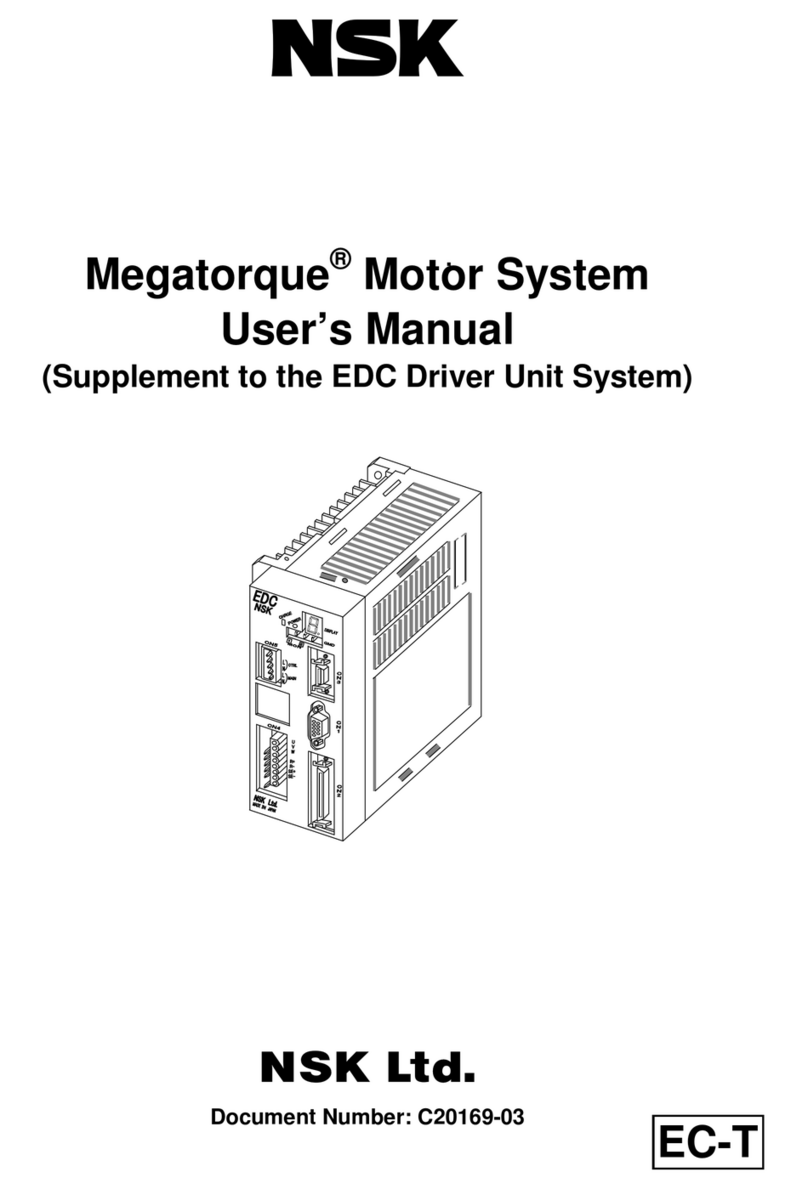
NSK
NSK MEGATORQUE MOTOR SYSTEM user manual

Desert Aircraft
Desert Aircraft DA50 EFI owner's manual

Briggs & Stratton
Briggs & Stratton 120000 Operator's manual

SEW-Eurodrive
SEW-Eurodrive PSH CM2H Series operating instructions

MTU
MTU 16 V 4000 M63L operating instructions

Daewoo
Daewoo G424 Gasoline Service manual
